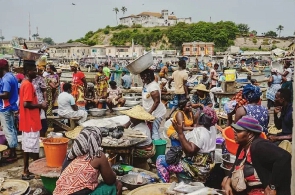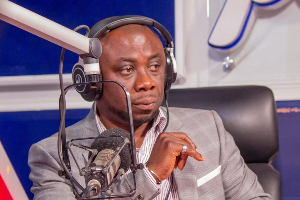Market watchers are maintaining the forecast of weak near term growth, even though the Q2 economic results of 2022 exceeded projections. Provisional gross domestic product (GDP) figures from the Ghana Statistical Service (GSS) showed an oil and gas growth of 4.8 percent for the second quarter of 2022; an increase from the slowdown logged during the first quarter of 2022 at 3.4 percent. This is despite an escalating macroeconomic crisis brought on by rising inflation, a sharp depreciation of the cedi against the US dollar, and a tight monetary policy environment that has elevated borrowing costs. The Bank of Ghana increased its benchmark rate by a total of 750 basis points to 22 percent in order to combat inflation and re-anchor expectations. Thus, Constant Capital – a broker-dealer – cautions that although it might take time, the economy will certainly feel effects of the central bank’s hawkish monetary stance more strongly in the upcoming quarters. “While the impact may be lagged, we expect monetary tightening on the economy to be more impactful within the coming quarters. Elevated inflation, currently sitting 3.4x outside the BoG’s upper target limit at 33.9 percent, will also weigh on growth,” the broker-dealer said. Ghana’s growth is largely expected to be impacted by a number of additional factors, including depreciation as well as extraneous global factors like the protracted Russia-Ukraine war, global supply chain bottlenecks, volatile commodity prices, inflation, hawkish policy stances by major central banks and US recession risks. However, Constant Capital noted that the growth outturn in Q2-2022 suggests that the revised government growth projection of 3.7 percent in 2022 might actually be feasible. Commenting on the outlook, Apakan Securities – a market watcher – also affirmed the economy’s impressive Q2-2022 performance amid the worsened macroeconomic environment. “The 4.8 percent y/y growth rate recorded for the Ghanaian economy in Q2-2022 amid a worsened macroeconomic environment for this year reflects an impressive performance contrary to projections. Nonetheless, we think Ghana’s economic growth prospect will be tilted toward the downside, considering the amplified macroeconomic risks in the economy,” it stated. Moreover, the latest S&P Global Ghana PMI for Aug-2022 came in at 45.9, down from 48.80 in Jul-2022; and remained below the 50.0 neutral mark, signifying a continuous decline in private sector activity. Q2 sectoral Performance Despite growing by 4.6 percent year over year in Q2 2022, the agricultural sector experienced slower growth than in Q1 2022 when it grew by 5.7 percent, and in the same period last year when it grew by 11.87 percent. This may be related to the rising price of fertiliser and supply limitations brought on by the conflict between Russia and Ukraine. Following a string of quarterly contractions in the previous year, the industrial sector has continued to demonstrate a strong recovery. The sector experienced a turnaround from a 6.35 percent y/y contraction in the same period last year, growing by 4.6 percent y/y in Q2 2022 after growing by 1.3 percent y/y in Q1 2022. The two largest sub-sectors – manufacturing, mining and quarrying – both performed well and supporting the industrial sector’s strong recovery. The mining and quarrying sector grew by 4.4 percent y/y in Q2-2022 from a growth rate of 0.6 percent y/y in Q1-2022, while the manufacturing sector was the fastest-growing with an 8.8 percent y/y growth rate. However, in Q2 2022 the water supply and sewage sub-sectors decreased by 2.7 percent y/y and 2.2 percent y/y respectively, for the first time in five (5) consecutive quarters. The second quarter of the year saw robust activity in the services sector, with growth of 5.2 percent year over year (y/y) from Q1 2022’s growth of 3.7 percent. The sub-sectors of education, health & social work, and information and communication all contributed to this growth.
Business News of Sunday, 16 October 2022
Source: thebftonline.com

















